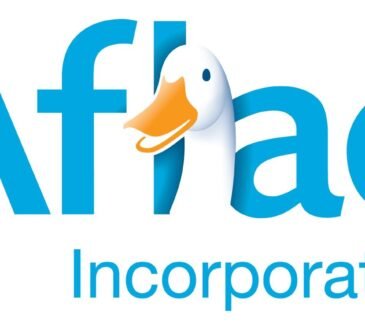Economy Minister Luis Caputo expressed surprise at the concerns raised by executives of major brokerage firms operating in Argentina regarding external debt payments for 2025. He told them he didn’t understand their misgivings, since they had secured not only the purchase of dollars for interest payments but also repo credits to ensure compliance with capital amortizations for the next year and a half.
Following the launch of “Phase 2 of Zero Issuance,” the government has entered a phase of promises. However, uncertainty remains prevalent, as reflected in discussions and reports circulating in the City, especially regarding the reserve shortfall and unclear prospects for improving the flow of foreign currency.
The expectations set by Economy Minister Luis Caputo and Central Bank President Santiago Bausili for their interlocutors last Tuesday include an easing of reserve drain in the short term, convergence of parallel dollars to the official exchange rate (which they promise to maintain within the crawling peg framework), and a rapid deceleration of inflation starting with the drying up of pesos. They even mentioned that they expect price increases to slow to between 1% and 2% in September or October.
A source at one brokerage that attended the Finance Ministry meeting told the Herald’s sister title, Ámbito, that within the framework of the exchange controls and interventions in the MEP and CCL dollars, it is feasible to keep the gap between official and parallel dollars (brecha, in Spanish) in check in the short term. However, the cost is the loss of foreign currency and chances for economic recovery. This, in turn, shifts the uncertainty to the medium term. For instance, they view an exit from controls with a unified exchange rate at the official rate as an unlikely prospect.
One indication that the City has not fully bought into Caputo’s roadmap is that, despite accumulating six consecutive months of financial surplus (always celebrated by creditors), country risk remained firmly above 1,550 basis points in July. Last Friday it jumped to 1,612 amid the collapse of international markets.
Reserve shortfall: the major concern
“The market’s focus, in the short term, is on the dynamics of external accounts, more precisely net reserves. These deepened their downward trend in July, with a market showing impatience regarding the removal of currency controls, one of the main obstacles to a virtuous dynamic in Argentina’s macroeconomics,” wrote SBS Group in a report to its clients.
It warned: “Accumulating reserves is crucial to dispelling fears about dollar payments, which led the government to attempt to give signals regarding the January 2025 payment. However, in the meantime, net reserves continue to decline. This could bring tension to the foreign exchange market. That risks halting the disinflation process via underlying measures. Can the government balance everything?”
According to SBS calculations, international net holdings fell by more than US$4 billion in July. A report from the Economic Studies Management at Banco Provincia estimated the monthly decline at US$4.6 billion, leaving net reserves US$4 billion in the red, according to IMF methodology.
Two reports by consultancies 1816 and LCG, which circulated in the City this Friday, estimated that net reserves are already around US$5 billion negative. Meanwhile, Portfolio Personal Inversiones (PPI) puts them more than US$6 billion in the red.
In the meeting with Settlement and Clearing Agents (ALyC), Bausili estimated that the deterioration in the Central Bank’s finances would reverse starting at the end of August because of falling energy import payments. However, analysts see various factors that could counter this possibility.
“On Thursday, the change in import payment terms (from four to two installments) began. This will add more pressure on reserves. Additionally, exports, affected by seasonal lows, are suffering from the loss of attractiveness of the blend dollar (due to the lower CCL rate) and the sustained decline in commodity prices (in particular, soybeans lost US$50 per ton in the last month and are at their lowest in four years),” noted LCG. It also pointed to BOPREAL maturities and the Central Bank’s intervention to contain the exchange rate gap, estimating that the Central Bank has already allocated US$300 million for this purpose.
In this context, 1816 highlighted two pieces of bad news: “The price of soybeans, which has [fallen significantly] since the start of Milei’s era, amounts to US$5 billion less in annual exports in a normal year. Also, the demand for dollars for tourism abroad seems to have increased again in July (winter vacation effect) based on credit card debt balances in foreign currency.”
Grim numbers for tourism
The report continued: “Tourism numbers look especially grim: the sector has a significant imbalance at an exchange rate of AR$1,300 (considering that credit cards are paid at the MEP dollar and do not impact reserves). This suggests that in a unification closer to the official exchange rate, as the Economy Ministry would like, foreign currency outflow through this channel would be immense.”
A report from the Center for Political and Economic Studies (CEPEC), founded by Leonardo Anzalone, stated that recent measures “significantly reduced reserve levels, raising concerns about debt sustainability and negatively affecting bond parity.” Thus, it suggested that the government’s promises to reaffirm its payment commitment were initially well-received by the market but that “doubts have resurfaced.”
LCG, for its part, raised concerns about the goal of foreign currency accumulation. “The target promised to the IMF assumes the accumulation of US$8.7 billion by September 30. As of [Thursday], US$5.8 billion had been accumulated, making compliance challenging in the described context. The government is counting on US$1.2 billion from international organizations (this week announcing a US$650 million loan from the IDB) and the final disbursement from the IMF (which in net terms will be offset by interest payments of US$780 million next week),” warned the firm, which was founded by Martín Lousteau and is directed by Javier Okseniuk.
In the medium term, the government’s major bet to secure the additional US$10 billion in debt that Caputo aims to obtain from the IMF is a political nod from a potentially victorious Donald Trump in the U.S. elections.
But a Trump advisor (though not speaking on behalf of the Republican candidate) dampened expectations: “The strategy of buying time thinking that Trump will secure more money from the IMF is an illusion, it’s illogical and will lead to failure. Because first, it doesn’t work that way. And second, Milei and Trump do not yet have a relationship,” said Mauricio Claver Carone, the former U.S. representative to the IMF who previously acknowledged that the multimillion-dollar loan to Mauricio Macri in 2018 was essentially an unsuccessful form of electoral support for Juntos por el Cambio when Macri ran for re-election in 2019.
Two firms in the City warned that “global headwinds” were contributing problems to the government’s plan. Quantum, led by Daniel Marx, noted factors including the increase in bond spreads for emerging markets, the appreciation of the dollar against other currencies, and a 10% decline in the country’s terms of trade.
Meanwhile, Econviews, led by Miguel Kiguel, listed: the fall in Wall Street and emerging market currencies, soybeans at US$380, and devaluation in Brazil, in a context of relative local currency lag and difficulty in accumulating reserves.
“Generally, external shocks are followed by exchange rate corrections, but today that’s a dirty word because all eyes are on reducing inflation,” Econviews wrote. “The issue is that, although the headwinds are not the economic team’s fault, the reality is what it is. In Chile, when copper falls, the peso falls. Pretending that nothing is happening outside leaves you more vulnerable,” Econviews stated.
Inflation versus reserves and activity
The announcements in the so-called “Phase 2” reflected how the government has clearly leaned towards bolstering the continuity of what it sees as its main political support: the deceleration of the consumer price index (CPI). To achieve this, it is clinging to a gradual appreciation of the currency, sacrificing reserves through intervention in the CCL, and prolonging the recession with tight monetary policies.
“Facing the second semester, there is a dilemma between two objectives that seem mutually exclusive to the government: continuing to accumulate dollars or maintaining the reduction in inflation,” stated Vectorial consultancy in its latest report. It suggested that the intervention in the CCL indicates the government is currently inclined towards the latter.
For Vectorial, this strategy shows a “dynamic inconsistency.” “The more dollars are ‘burned’ to intervene, the market might perceive that there are fewer resources available, which would increase uncertainty going forward, and the brechas might not necessarily narrow. Each dollar used to tame the gap would have less impact than the previous dollar,” it argued. Moreover, the scheme is “incompatible with a solid recovery of activity,” which could further deteriorate “social indicators.”
Thus, the consultancy led by Eduardo Hecker and Haroldo Montagú questioned: “With economic activity at a low point, rising unemployment, and no reserves in sight, is the government’s stabilization scheme socially tolerable and sustainable?”
Monetary uncertainty
Beyond the matter of reserves, the monetary program announced by the Central Bank after a series of disorganized measures by the president and Caputo has not provided clarity to economic agents. “It is ambiguous — intentionally so, we believe,” stated 1816. Milei and the minister spoke about ending all forms of issuance “in line with the President’s idea of ‘endogenous dollarization,’” said the consultancy. However, the Central Bank’s Monetary Framework set a goal for the monetary base to grow from the current AR$21 trillion to AR$47.7 trillion by 2026 “without being very clear which issuance channel that would go through.”
LCG also focused on this: “Despite strong gestures towards ‘zero issuance,’ the fact is that the monetary base could more than double to reach the self-imposed limit, resulting in a goal that is difficult to understand: too lax for the short term, too harsh for the medium term. Adding to this are difficulties in understanding where this process is leading (currency competition? Defined how? Exit from controls? Endogenous dollarization?) making it possible that new announcements will be required, hoping this time they will be more consistent, leading to an update of the agreement with the IMF and facilitating a larger cushion of dollars to manage the transition.”
According to 1816, the announcement implies that “there has not yet been full definition from the authorities regarding the future monetary regime,” which might involve the need for a “balance between what Milei has always proposed (dollarization) and what the IMF staff’s technical experts would require.”
“If the market had doubts about the 2025 monetary policy, these were not answered by the new Central Bank framework,” it concluded.





